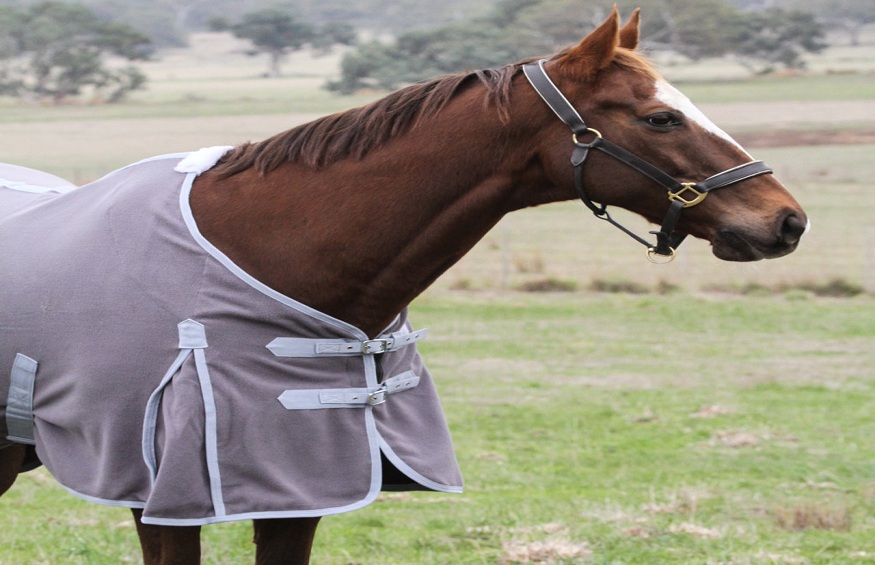Horses are different from humans in how they respond to different weather conditions. Humans cover up when it’s cold, whereas horses are created to self-protect by producing natural oils that keep them warm. Some horse breeds, like native pony and cob types, adapt well in winter and can live without rugs. All they need is enough forage and shelter.
Over rugging your horse can lead to issues like excess sweating, which can cause irritation and rubbing. A Heavyweight fleece horse blanket blocks the sun from getting to the horse’s skin, limiting the absorption of vitamin D. You can minimize such risks by exposing your horse to the sun in a bright-colored rug.
How to Determine if Your Horse is Cold
Knowing how to check your horse’s temperature is vital as a horse owner. With adequate knowledge and understanding, you can use a pony blanket when appropriate. Carry out these checks to determine if your horse is cold.
- Cold makes hairs stand. Check if the hair ends on your horse are standing. A visual observation is enough.
- Put your hand under the horse’s rug below the neck (wither). If it feels cold, the horse is chilly.
Don’t check your horse’s temperature on the legs or ears, as it’s inaccurate. Why? Because these areas are exposed and won’t provide an accurate situation. You can also check for these tell-tale signs to know if your equine friend is cold.
- Slipped rugs can leave some parts of the body exposed to cold.
- A change in behavior like shivering, circling in one area, or restlessness.
The thermoneutral zone for horses is broader, and they’ll feel cold when temperatures fall or rise outside 0 – 25 ⁰C. Humans have a narrower thermoneutral zone, meaning you can’t rug a horse depending on your feelings.
How to Determine if Your Horse is Hot
Horse fly sheets can make a horse feel hot. Therefore, you must know how to check a horse’s body temperature to make a proper judgment. Here are some signs to look out for:
- Place your hand under the rug to check if the horse feels damp. If the horse isn’t cooling off after a workout, it’s too hot.
- Pinch the horse to determine if it’s dehydrated. A gentle pinch and release of the horse’s skin above the shoulders is adequate. A dehydrated horse’s skin holds for seconds before reverting. Perform the test several to ensure you get accurate results.
You can also check for these tell-tale signs to know if your horse is too hot.
If the horse was in an exercise a few minutes ago, it may feel hot. Wait until it cools down to check the temperature; if it takes too long, it may be overrugged.
- Sluggish movement or refusal to move can indicate high temperatures. A horse fatigued by heat is slow and sleepy.
- Rapid breathing after exercising is normal, but if it persists, it is too hot for the horse.
- Disinterest in food, play or sounds that get their attention in normal circumstances can be a sign of overheating.
- Exercise can cause the heart rate to increase. However, if the horse’s heart beats exceedingly after recovery, they could be heating.
In summary
Besides checking your horse for extremely high or low temperatures, you can have in place practices that keep you prepared. Install a thermometer in the stable to check the temperature when you have concerns or monitor the weather forecast in your local area. Take immediate action if your horse is hot or cold to make them comfortable.

